Throughout its generations, what did the Cougar and Mustang share, if anything? In the sixty-five years between the end of World War II and the end of the Grand Marquis production in 2010, Ford Motor Company and its Mercury Division produced some truly memorable pairs of enthusiast-oriented automobiles. Some of those paired cars were the Ford Fairlane and Mercury Cyclone, Ford Galaxie and Mercury Marauder, and even the Ford Escort EXP and Mercury Lynx LN7 (yes, we are dead serious about that last part – and when you review the competitive history of those cars, you will know why!). But no matter where you start when discussing the postwar performance history of these two brands, you will always end up in one place: the famous duo of the Ford Mustang and Mercury Cougar. Although the Cougar and Mustang started as close siblings, over the years to come they would both go to fantastic places in search of performance and market share. Here is our guide to that journey.
1964 ½ to 1970
In the beginning, Ford wasn’t sure there would be a market for a Mercury version of its new, compact two-door, Mustang – until the sales success of the “1964 ½” model blew the showroom doors off. Within just two years, the 1967 Mercury Cougar was conceived and released. While its basic platform came from the Ford Falcon, same as their widely successful pony car, it had a longer wheelbase (by three inches) for more passenger comfort and better over-the-road demeanor. Priced against the upscale Thunderbird, the Cougar was the first Mercury with hidden headlamps and the first Ford with an electric sunroof.
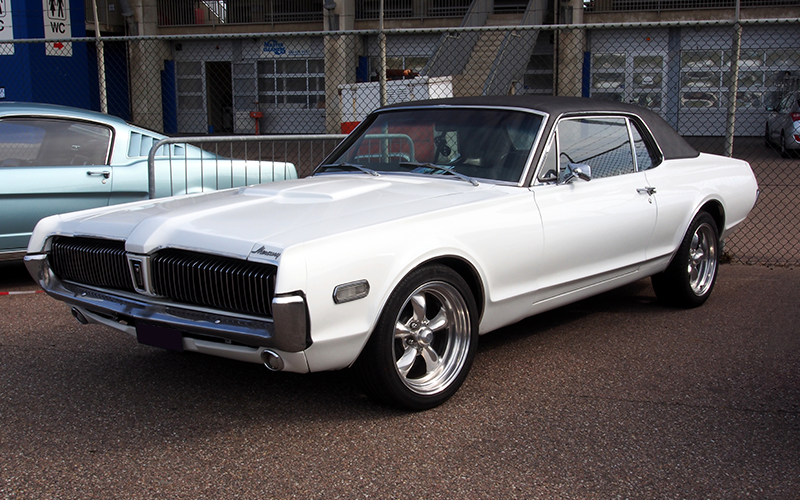
The engines were mostly taken from the Mustang, with both small-block and big-block V-8s available. The Boss 302 V-8 appeared halfway through 1969 in the Cougar Eliminator, as well as the 428 Cobra Jet engine. While there was no Shelby Cougar available, there were Hertz Cougar Eliminators in 1969 and 1970, albeit in much lower production numbers than the Hertz GT-H.
As a rule, the Cougars from these first two generations are a bit heavier and a lot better equipped than their Mustang counterparts. Production ran at a fraction of what Mustangs sold, in part due to a smaller dealer network, but also because the Cougars were significantly more expensive. Convertible Cougars were also available in 1969 and 1970.
1971 to 1973
When the Mustang grew larger and heavier, so did the Cougar. But somehow these changes sat more lightly on what was always intended to be a more luxurious and upscale vehicle. Cost-cutting measures at Ford saw the Cougar adopt the Mustang’s roofline over a wheelbase that was three inches longer than the Mustang and a body that was six inches longer.
These changes made the Cougar an intermediate-sized coupe which resulted in the discontinuation of the Cyclone before the 1973 model year. To meet demand from customers who desired a smaller sporting car, Mercury imported the German-made Ford Capri, thus bracketing the Mustang from above and below.
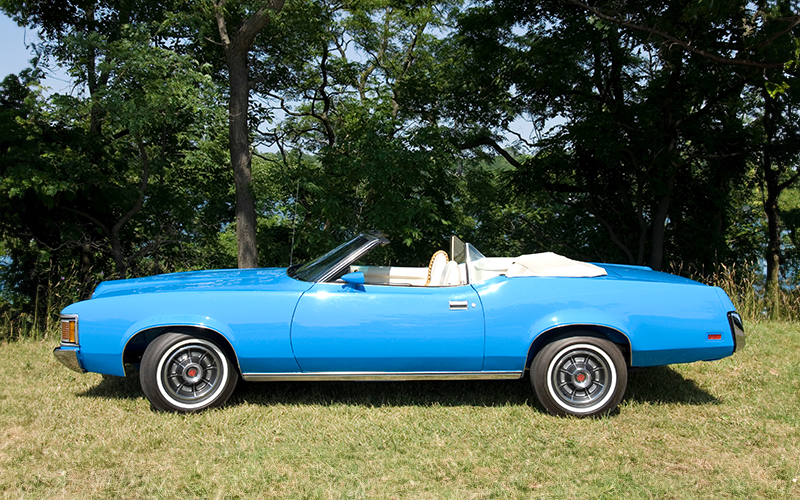
Sales of the Cougar were steady but not spectacular, which drew speculation that Mercury might discontinue the Cougar. That speculation was both right and wrong, because although 1973 was the last year in history that the Cougar shared major body panels with the Mustang, it was not the last year that they would share a platform.
1974 to 1976
With the Mercury Cyclone out of the model range, and with “personal luxury” all the rage in America, it didn’t made sense for the Cougar to follow the Mustang into a downsized Pinto-based body. Instead, it grew twenty inches in length to share the body of the new-for-1972 Ford Torino and Mercury Montego. The primary visual differences between the Cougar and the Montego were a mandatory vinyl roof and opera window for the Cougar and an upscale-looking front fascia.
The interior, too, was straight out from the Montego. On the positive side of things, the engine lineup was stout with two 351 cubic-inch small-blocks and big-blocks in both 400ci and 460ci displacement. Public response was adequate, ensuring that the Cougar would continue as a personal-luxury coupe for the next few generations. This was especially true of the well-received Mercury Cougar XR-7 package, which had begun as a “Euro-inspired” switch and console package back in 1967 but now merely denoted the most expensive and prestigious Cougar.
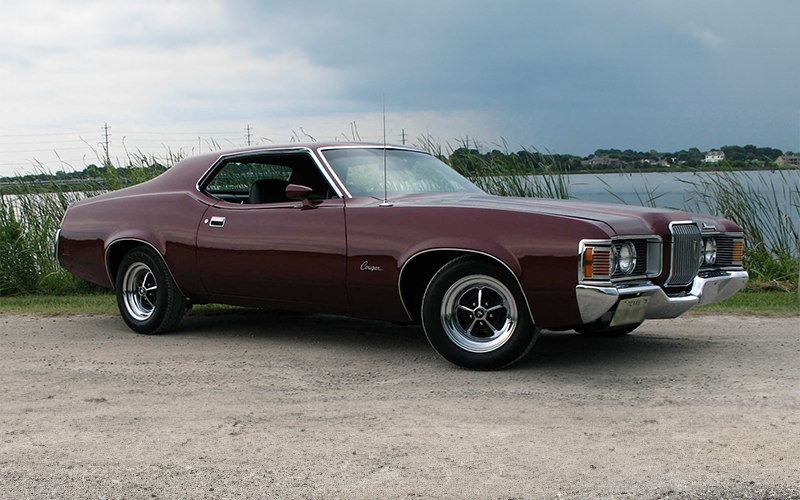
1977 to 1979
For these three years, which represented both the peak of personal luxury in the market and an increased focus on economy, Ford moved the Cougar yet again. This time, it became a twin of the Thunderbird and LTD II. Both of those cars were considered “downsized” for 1977, but that wasn’t true for the Cougar as it had been on the smaller intermediate platform before.
Lincoln Mercury dealerships were not as thrilled about this as they might have been since the Cougar coupe cast the same shadow and featured many of the same cues as the Continental Mark V, and at a price point that was not as profitable. But they did welcome the arrival of the first-ever Cougar sedans and wagons. The Cougar wagon is a rare find nowadays as it was only produced for a single year before being discontinued in favor of the smaller and more spacious Fox-platform Zephyr wagon and Panther-platform Colony Park.
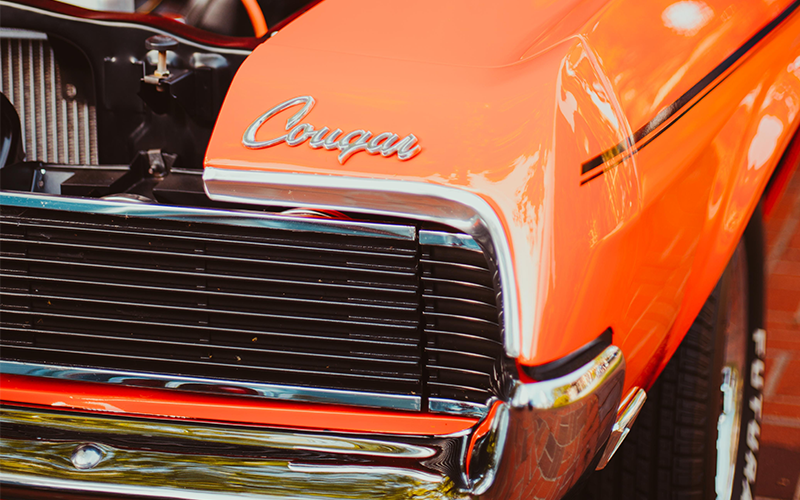
This was the best-selling Cougar in history and would remain so with 1978 peaking at 213,270 units, and more than two-thirds of which carried the XR-7 badge. But as always, change was in the air. The new intermediate-sized GM cars of 1978 had been wildly successful, and Ford had been put on notice. So the days of selling a 223-inch-long wagon as a “mid-size” car were over forever. It was time to put the Cougar on a diet and, ironically, this would reunite it with the Mustang.
1980 to 1982
Strapped for cash and desperate to downsize, Ford put the 1980 Mercury Cougar on its intermediate “Fox” platform. Originally found beneath the 1978 Fairmont and 1979 Mustang, the Fox platform was exceptionally flexible and could be used for everything from a 2700-pound, four-cylinder sports car to the Lincoln Continental Mark VII.
The Mercury Cougar sedan, a “badge-engineered” Ford Granada, was set apart by only a fascia and some trim. The Cougar wagons, returning after a two-year absence, were Granada wagons, which means that from the A-pillar back they were identical to Fairmont/Zephyr wagons from 1978. The Cougar coupe was a Ford Thunderbird, which had also been downsized to Fox. Only distinguished from the T’bird via a few trim pieces and a lack of hidden headlamps, the Cougar coupe was a sales disaster. In fact, the whole Cougar line failed to sell. But they were good cars with plenty of virtues, including economy, spaciousness, and ease of repair. They just lacked pizzazz, something that would be rectified in 1983.
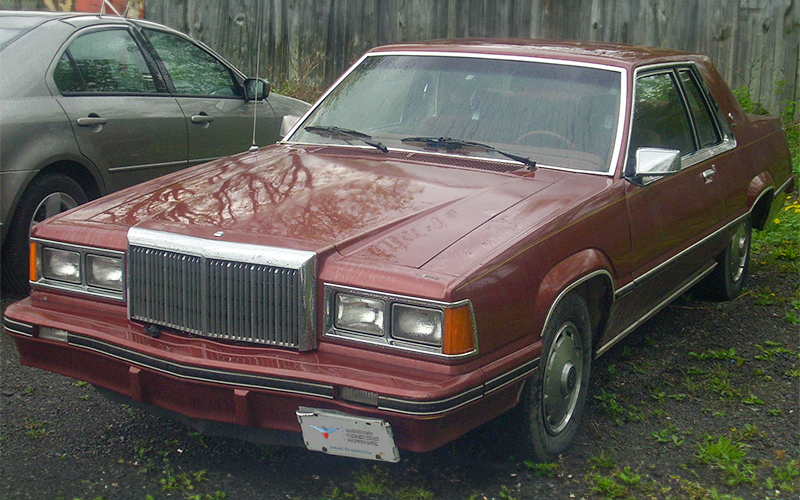
Although the Cougar and Mustang were once again relatives in 1980, the proper sibling for the Mustang was the Mercury Capri. The Capri abandoned its German heritage to become a Fox-platform twin in 1979. Distinguished initially from the Mustang by a flat nose that many people preferred to the “aero” Mustang, the Capri gained a massive “bubble” glass hatchback for 1983. This mirrored the LN7 coupe, which was distinguished from the Escort EXP by a bubbleback. Alas, the EXP Turbo had a bubbleback as well, which showed that a lack of budget went a long way towards obscuring intentional brand DNA.
1983 to 1988
Put a 1983 Mercury Cougar on a vehicle lift next to a 1982 Cougar, and you might not see much difference – but up top everything was changed. Starting with the outrageous and lovely 1983 “aero” Ford Thunderbird, the Cougar added a more upright grille and a vertical rear window. The XR-7 package was revitalized as well; no longer just trim and stripes, it meant you had the Thunderbird Turbo Coupe powertrain.
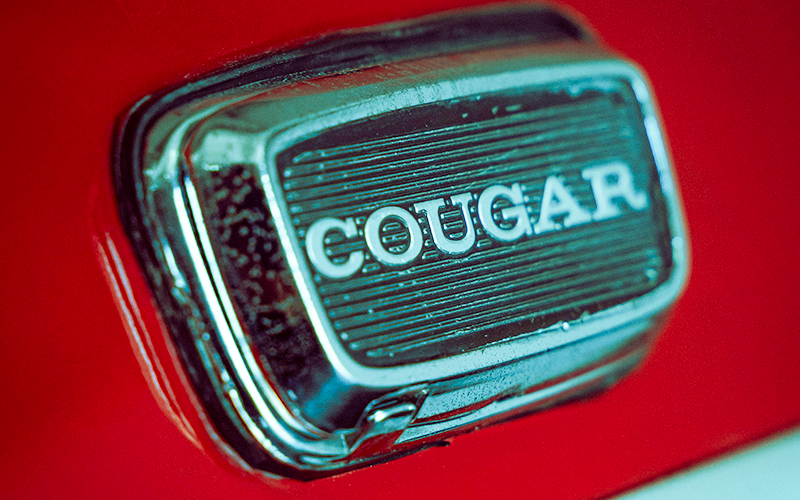
The public adored the “aero” Cougar, and it sold nearly as well as the Thunderbird on which it was based despite having fewer dealers to carry it. A mild restyle in 1987 took advantage of new headlight laws and enabled the marque to finish strong, having sold over 100,000 units every year but the 1983 debut.
As a Fox platform car, these Cougars can take pretty much every performance part intended for an 80’s Mustang, from the engines and transmissions to suspension changes. Ford was emboldened by the success of the car, and its Thunderbird sibling, to spend real money on their successor.
1989 to 1997
The “MN12” platform on which the new Cougar and its Thunderbird twin were built represented tremendous ambition on Ford’s part. Sharing nothing with the Fox platform that continued to underpin the Mustang, MN12 offered new proportions, sophisticated electronics, and an independent rear suspension. The XR-7, with its supercharged V-6 and available manual transmission, was intended to compete heads-up with global superstars from BMW, Audi, and Mercedes-Benz. Which it did.

Unfortunately, the cost of the MN12 platform, together with changes in the market, significantly cut the demand for Cougars over these years. A mild restyle in 1996, which cut costs by sharing the front fascia with the Thunderbird, did nothing to help. Sales dropped steadily until Ford withdrew the car at the end of 1997, and there was no Cougar for 1998.
1999 to 2002
The last Cougars to ever be built returned to the mission of 1967 – an upscale coupe with striking design and genuine sporting credentials. This time, it wasn’t the Mustang providing the platform, but rather the Ford Mondeo “world car” sold in the States as the Ford Contour. This new Cougar was European in design and looked much like the Fords being sold overseas at the time. The powertrains were sourced from the Contour, with the sparking quad-cam 2.5-liter Duratec engine pairing with a five-speed manual transmission for the fastest over-the-road Cougar in history.
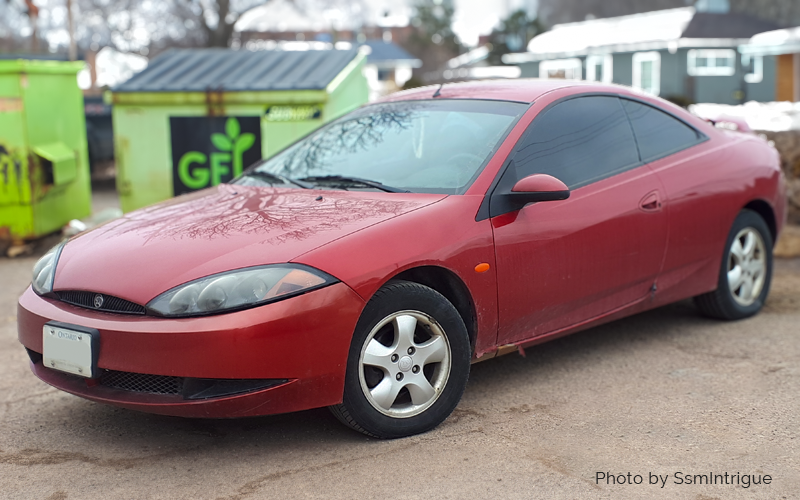
Popular and well-reviewed on its release, the last generation of the Mercury Cougar saw dwindling sales over its four-year model run as buyers lost faith and interest in the Mercury brand. This, along with the discontinuation in the US market of the Contour from where it drew most of its mechanical parts, led to the decision to terminate Cougar production at the end of the 2002 model year.
Looking back
With stints as everything from a 429-powered muscle car to a Euro-style corner-carver, with a 19-foot-long wagon in between, the Cougar reflected many different facets of American automotive enthusiasm over the years. Even today, the cat-in-a-circle logo is instantly recognized by many. It is no surprise that when the popular press got hold of a rumor regarding a new-generation four-door sedan built on the outstanding current Mustang platform, the first name that fell from everyone’s lips was: Cougar. Will the cat ever come back? We will not be surprised if it does.



